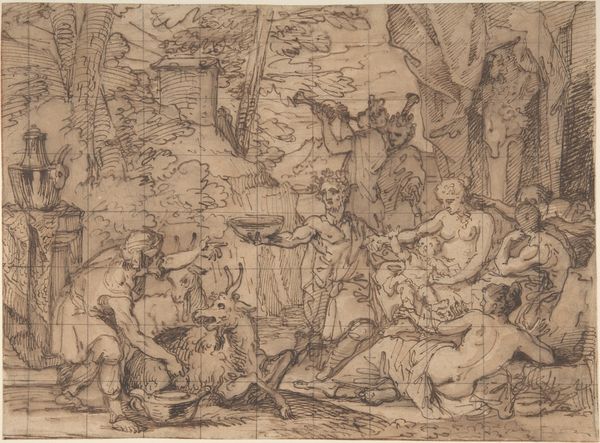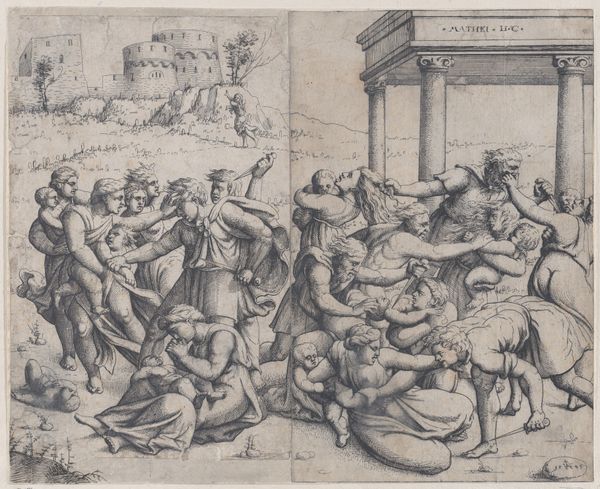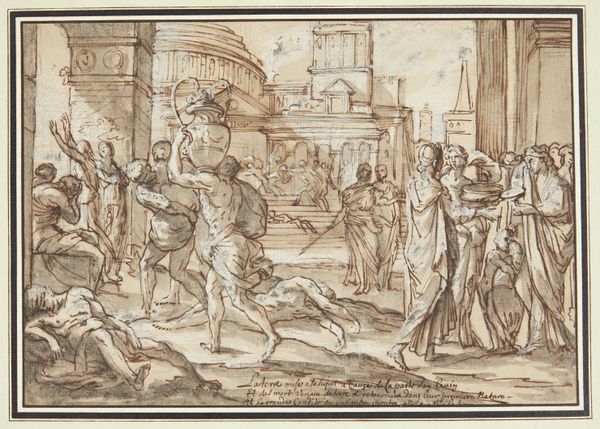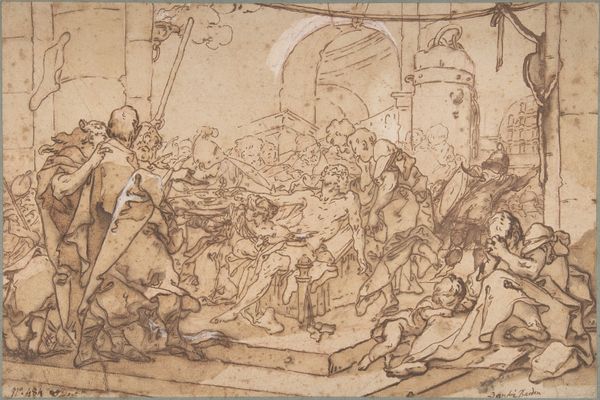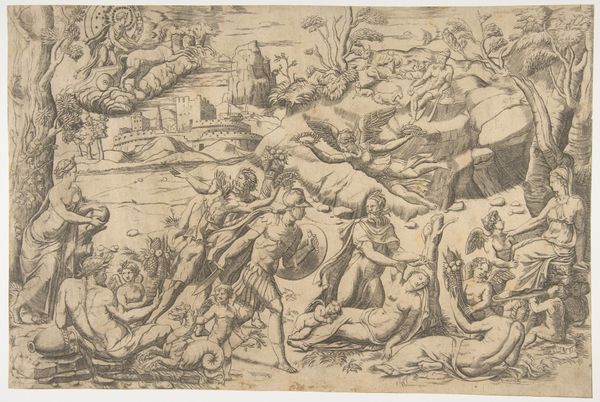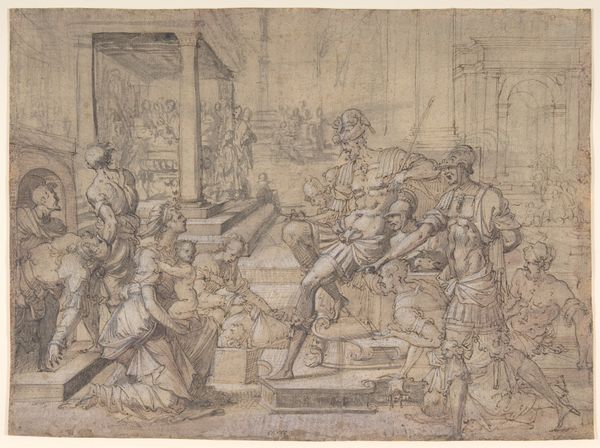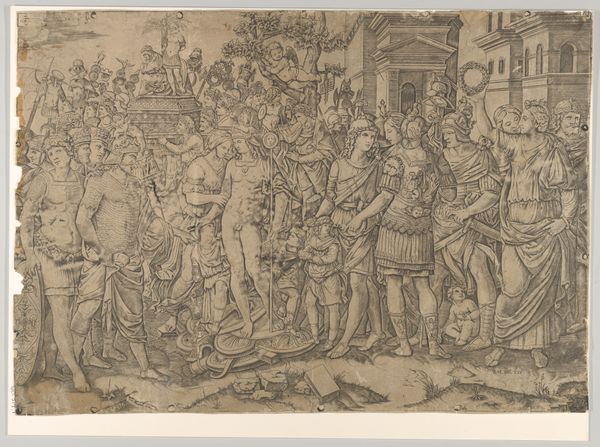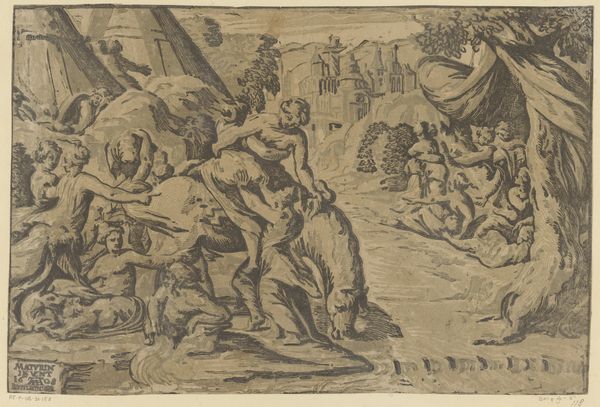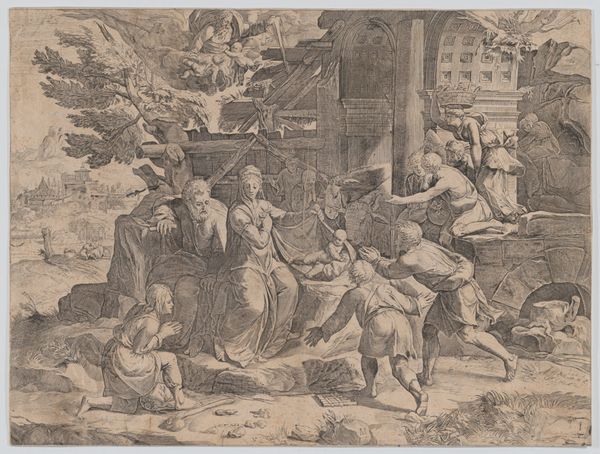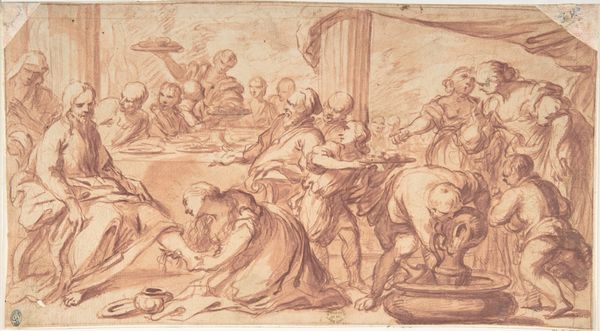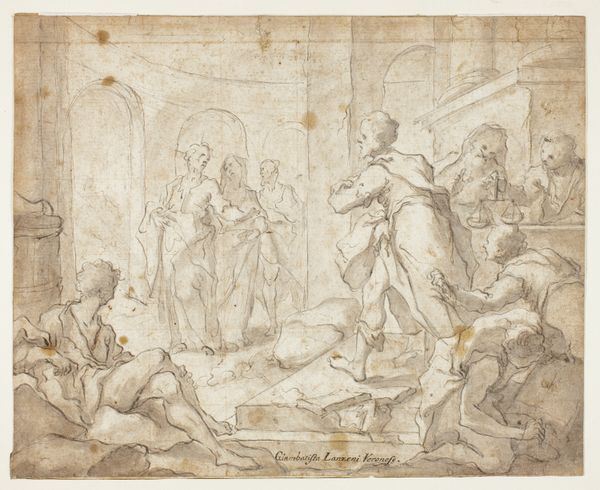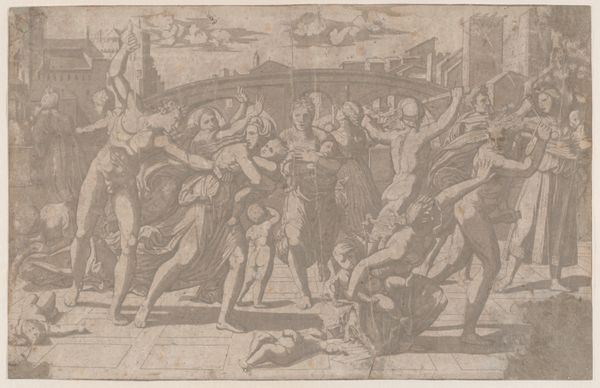
drawing, print, paper, ink
#
portrait
#
drawing
# print
#
landscape
#
figuration
#
paper
#
11_renaissance
#
ink
#
history-painting
#
northern-renaissance
Dimensions: Sheet: 14 3/8 × 19 11/16 in. (36.5 × 50 cm)
Copyright: Public Domain
Curator: What a wonderfully bustling scene. We are looking at "The Adoration of the Magi," a drawing created between 1512 and 1542 by Bernard van Orley, held here at The Metropolitan Museum of Art. Executed in ink on paper, this print offers us a window into a pivotal moment in Christian history. Editor: My initial thought? Organized chaos! There’s so much going on—a flurry of gestures, people craning their necks...it feels like a backstage drama is unfolding alongside the main event. A touch frantic, wouldn’t you agree? Curator: The piece certainly embodies the energy and artistic concerns of the Northern Renaissance. Looking at the historical context, it is crucial to remember that these biblical scenes often served as vehicles to reflect societal structures and political ideologies. Note the specific positioning of the magi, their garments... How does Van Orley seem to position European power structures and racial dynamics within this adoration scene? Editor: You know, the detail in those garments is fascinating. I'm drawn to the expressive faces, particularly the wary glances. Everyone seems to be whispering their own subtext. Is that intentional, or just me projecting? And the ruins, too! I’m seeing little angels—well, maybe cherubic toddlers—tumbling around! It is wild and so beautiful at the same time. It brings to mind the saying "Before enlightenment, chop wood, carry water. After enlightenment, chop wood, carry water." Curator: Exactly! And when we consider the inclusion of the ruined architecture – broken columns and crumbling stones – a complex metaphor arises regarding the supplanting of previous powers. What message does it suggest regarding Christianity’s rise? This layering of the narrative is deliberate and meant to resonate with particular audiences of its era. It also suggests an awareness of empire and conquest. Editor: The ruin symbolizes, the new dawn. And all that texture created with the ink is really remarkable! You feel the passage of time, like these layers have always existed together. Okay, before I start seeing meaning in every single pen stroke, what should someone walking by take away from Van Orley's rendering of the Adoration? Curator: This piece allows us to look at the complicated ways in which biblical scenes reflect specific ideological, cultural, and power structures that were formative in shaping Western European identity. Editor: I guess it is fair to say there's more to this print than meets the eye.
Comments
No comments
Be the first to comment and join the conversation on the ultimate creative platform.
